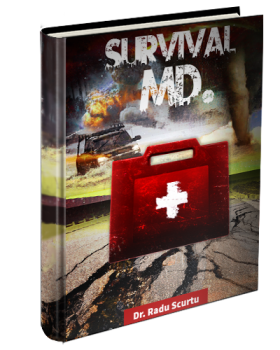We all bring skills, experience and education to the discussion, which is what makes our “neighborhood” so great. These assets differ by person and age group, but that adds to the diversity needed for new ideas and creating a balanced outlook.
By Regulator5, a SurvivalCache contributor
Read Part 1: Survival Eating
Personal Lessons
My prepping began as a child, although I did not know this at the time. My grandparents were products of the Great Depression and World War 2, my parents products of the “social revolution” of the 1960’s and Vietnam, and I am a product of the boom of the 1980-90’s and the War on Terror.
I learned much from my grandparents, albeit it did not become “known” to me until I was older. I remember stories of the battles for  Iwo Jima, Corregidor, the Philippines, the Ardennes Forest, Normandy, Italy, and the push beyond the Rhine. These stories, although I was too young to understand the tactics and strategies, helped me survive my own deployment 60 years later. I didn’t know that by “trying” to live up to the standard of Patriot and human that our greatest generation, I would find my inner peace and understanding, compassion and empathy for what must be done. I did not want to dishonor both of my Grandparent’s record of service; between them they won multiple Bronze Stars, Presidential Unit Citations, Purple Hearts, Silver Star, etc.
Iwo Jima, Corregidor, the Philippines, the Ardennes Forest, Normandy, Italy, and the push beyond the Rhine. These stories, although I was too young to understand the tactics and strategies, helped me survive my own deployment 60 years later. I didn’t know that by “trying” to live up to the standard of Patriot and human that our greatest generation, I would find my inner peace and understanding, compassion and empathy for what must be done. I did not want to dishonor both of my Grandparent’s record of service; between them they won multiple Bronze Stars, Presidential Unit Citations, Purple Hearts, Silver Star, etc.
They both came from different backgrounds which also affected their outlooks on life in general. My maternal grandfather came from Louisville, Kentucky. His family was one of the founding families and affluent until tragedy struck. He lost his father at age 3 and then his step-father at age 12 during the Depression. The loss of the men of the house, led to losing the farm, which caused a snowball effect on my grandpa; he, along with his 2 older brothers, left home to fend for themselves, as their mother was having trouble feeding all 6 children after losing her husbands and farm during the Depression. How many 12 year olds do you know could survive on their own today? Although he survived, eventually finding his way into the Army just months before Pearl Harbor, he lost one of the most critical elements of “survival” in my opinion, Family Values. He always treated us with love and caring but his brothers and sisters all were very “lost” to each other (1 brother was dead 4 years before any of the others knew).
My paternal grandfather grew up on a rural Indiana farm not far from the Kankakee River. He took a full time job as a kid to help  make ends meet during the Depression. His family stuck together and subsided on what they raised, hunted, foraged and fished. Grandpa, along with 4 of his 5 brothers served in World War 2 (the youngest served in Korea). This side has held extremely strong family ties and have pushed hard to keep the younger generations following this closeness.
make ends meet during the Depression. His family stuck together and subsided on what they raised, hunted, foraged and fished. Grandpa, along with 4 of his 5 brothers served in World War 2 (the youngest served in Korea). This side has held extremely strong family ties and have pushed hard to keep the younger generations following this closeness.
Both my grandmothers grew up on farms. They worked the farm chores and foraged and hunted to keep the family fed through the depression. These habits were handed down and taught to their children, who in turn tried handing it down to their children, although only a few of us cared to learn or remember the lessons learned. My perception on survival has been molded from 2 very unique outcomes to the same major disaster. Although the mitigating circumstances were different, both families survived the Depression, one as a whole family unit and the other as “individual” survivors. To me the harshest personal lesson is that without preparation and strong ethics and family values, mixed in with some luck (losing a father and step-father just as the Depression hit was bad luck); my family will NOT survive, even if we all “live” through the ordeal.
Survival is based primarily on a 3 part system;1) shelter 2) water and 3) food. I listed them in the order most survival guides lists in priority. Shelter is tantamount to not only being able to ward off nature’s wrath, but also for morale. Morale is important, without it; the will to survive gets lost. The body will start shutting down and death will be imminent after 3 days without water. We can survive weeks without food but every day we go without food’s vital nutrients, we lose the energy and ability to gather the very food we have been trying to get. Many people, me included, have talked, given ideas, and plan on hunting to feed ourselves and family members in a long term situation. This idea is sound but also has negatives that need to be addressed. We have had articles published here on SurvivalCache that gives instruction on gardening. I only have a philosophical theory to add to promote WHY this is so important. The background information was not to pat my grandparents on the back (although that entire generation deserves it), but to showcase what it took to get through one of our nation’s most trying times and maintain our values we hold so dear, the family homestead/farm.
The loss of the farm led one grandpa to leave home and live as a hobo. He worked odd jobs, foraged, hunted and rode the rails until he was old enough to enlist (his brothers had already joined). Like today, many of the effected youth joined the military for a pay check and to get the basics of survival; a roof over their head, 3 meals a day, and water.
Homesteading/farming/gardening will be the best option for long term survival and I base my opinion on historical facts. During the Depression, wild game was hunted to dismal populations. Squirrels and rabbits were scarce and deer populations were depleted so drastically, that it took 30 years in some states before the population recovered enough to allow hunting to begin again as we know it now.
Livestock & Gardening
The population in the US has more than tripled, 92.2 million in 1910 and 308.7 million in 2010 according to the US Census. Even 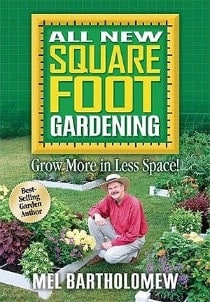 with the modern outlook towards conservation and the recovery of animal populations in the wild; we will be looking at a massive over hunting issue if a long term event happens like another Great Depression. This is the reason I promote homesteading, to whatever degree possible in your location, as the best long term plan. Urban areas can be an obstacle, but not definitive stopper for homesteading. Rooftop gardens can be started (check with building superintendent or whoever can make the decision to allow access) using planting boxes for the garden bed. The book “Square Foot Gardening” by Mel Bartholomew can be a very good source of information. If you live in the suburbs or have a small city lot, then you may be able to add some rabbit hutches and small chicken coops to your preps (check local laws first). If possible and working on small acreage, I would suggest goats and/or sheep for primary livestock. Their smaller size and willingness to eat most things makes them easier to keep. They also don’t require as much pasture to graze for adequate success in surviving themselves; while in agriculture class, it was taught you need 10 acres of regular pasture per cow for pure grass fed beef. This formula can change with better or worse grassland for your pasture.
with the modern outlook towards conservation and the recovery of animal populations in the wild; we will be looking at a massive over hunting issue if a long term event happens like another Great Depression. This is the reason I promote homesteading, to whatever degree possible in your location, as the best long term plan. Urban areas can be an obstacle, but not definitive stopper for homesteading. Rooftop gardens can be started (check with building superintendent or whoever can make the decision to allow access) using planting boxes for the garden bed. The book “Square Foot Gardening” by Mel Bartholomew can be a very good source of information. If you live in the suburbs or have a small city lot, then you may be able to add some rabbit hutches and small chicken coops to your preps (check local laws first). If possible and working on small acreage, I would suggest goats and/or sheep for primary livestock. Their smaller size and willingness to eat most things makes them easier to keep. They also don’t require as much pasture to graze for adequate success in surviving themselves; while in agriculture class, it was taught you need 10 acres of regular pasture per cow for pure grass fed beef. This formula can change with better or worse grassland for your pasture.
Goats can provide meat, wool and milk. There are several goat breeds and each has their purpose much like cattle. The one great 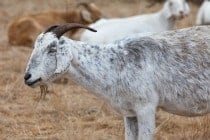 thing about goats is that they eat just about everything. Check out the different breeds and see which one will best fit your needs and available space if this is an option you choose.
thing about goats is that they eat just about everything. Check out the different breeds and see which one will best fit your needs and available space if this is an option you choose.
If you have enough acres to have a full functioning farm for a homestead, then you can diversify your livestock or have greater numbers. They have “shortline” breeds of some cattle. These are bred to be smaller in size than the cattle we normally see. Another item to look at when selecting a breed is which breeds do best on grazing compared to grain fed. This was something looked at by the old west ranchers when they started importing Herefords (“white faced cattle) to replace the popular Texas Longhorn. The Herefords would add weight faster on grass, plus their temperament was gentler (surviving an event and/or an attack from the “Golden Horde” wouldn’t be worth mentioning if you get gored by your steak dinner). I prefer Jersey dairy cattle over Holstein for a few reasons; they have a higher butter fat content, so I can produce more butter, cheese and cream, they produce less milk overall, 1860 gallons per year compared to 3260 gallons per year.
Hogs will be another resource that will serve multiple functions; hogs will seek out and eat any snakes in their area. This is very beneficial if poisonous snakes are present to pose a danger to other livestock or people. They are also excellent “rototillers” when rooting for food, thus aerating and breaking up the soil. Pork offers more of a problem for storage but salt pork was a main staple of pioneers.
Llamas (best if one female is used) are good protectors of the herd. I know a few farmers who have them just to help protect their cattle from predators. They can also be used for meat, wool or as pack animals. Alpacas may also be of similar interest as they are closely related but are not known for their protection ability.
Horses are also an option. The Mongols even drank horse milk; Native Americans (among others) ate horse meat often. They provide pack animals, transportation and will be the tractors when fuel is no longer available. Mules and oxen are also capable of meeting some of these needs more efficiently than horses.
The availability of pasture, land for hay or grain production for feed, and number in your group/family will all have to be considered for which animals would best suit your needs. Also, most cattle need 2 years until fully grown and ready for butchering, for grass fed. You can butcher earlier if the need arises but for optimum size, the 2 year rule of thumb is followed so should be planned for. All animals are an option and each use must be looked at to find the type and breed that best fits your needs and resources.
The manure from these animals then serves as fertilizer for the gardens; be careful of hog manure and chicken as they are high in nitrogen and can kill crops if over used or put on the garden too late in the year. Read several books from several authors to get the most complete knowledge base in fertilizer use.
Predators
Another issue I have not seen discussed much is the competition from nature’s predators. Coyotes in particular are extremely 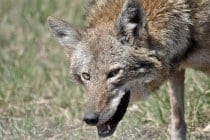 dangerous to preppers. They will not only be hunting the same prey we need to survive, but once the population of game animals gets reduced to extinction levels (or close to it), they will start preying on our livestock, children, and others not able to defend themselves. Now imagine if you have bears, cougars, wolves or other large predators in your area? Some further observations on predators; their populations are growing fast because of the lack of trapping and hunting over low fur prices. I have started trapping coyotes very hard in my area for several reasons, 1) It gives me practice in using my traps and snares, 2) It eliminates competition if the need arises for survival hunting, 3) Protects livestock and children. With current fur prices, I’m not worried about selling the fur; I tan it myself and have been utilizing it for my “Buckskinning” and Native American projects. In the “Survival Eating” article on SC, I gave a list of the many different animals I have eaten in the past. Coyote wasn’t one of them but it was eaten by Lewis and Clark’s Discovery Corps according to their journals. I personally would prefer venison roast over coyote tenderloin, so I’ll try to keep the coyote population controlled to allow deer, rabbit, squirrel, and ground nesting bird populations to thrive while I can.
dangerous to preppers. They will not only be hunting the same prey we need to survive, but once the population of game animals gets reduced to extinction levels (or close to it), they will start preying on our livestock, children, and others not able to defend themselves. Now imagine if you have bears, cougars, wolves or other large predators in your area? Some further observations on predators; their populations are growing fast because of the lack of trapping and hunting over low fur prices. I have started trapping coyotes very hard in my area for several reasons, 1) It gives me practice in using my traps and snares, 2) It eliminates competition if the need arises for survival hunting, 3) Protects livestock and children. With current fur prices, I’m not worried about selling the fur; I tan it myself and have been utilizing it for my “Buckskinning” and Native American projects. In the “Survival Eating” article on SC, I gave a list of the many different animals I have eaten in the past. Coyote wasn’t one of them but it was eaten by Lewis and Clark’s Discovery Corps according to their journals. I personally would prefer venison roast over coyote tenderloin, so I’ll try to keep the coyote population controlled to allow deer, rabbit, squirrel, and ground nesting bird populations to thrive while I can.
Crops
Crops will be a mainstay in the diet and a garden can help deflect a major portion of the food budget even under normal circumstances. I suggest heirloom seeds, although many promote the hybrids. This is a choice only you can make for yourself and I will attempt to offer some pros and cons on each type.
Hybrid seeds are created to help withstand drought, insects and disease. They will normally have a higher yield, thus providing  more food per season. Normally, they are easier to grow, as the science behind making them resistant to other issues, also makes them more “user friendly”. On the other hand, you must have the seeds available for however long you believe an event can last or have access and ability to use an agronomy laboratory. A lot of the vitamins and other minerals have been bred out of the hybrids to make use of their resistant genetics. Many hybrids have also been bred to create a higher than natural sugar or fructose level. This is especially true of fruits and corn. According to Diabetes Cure 101, this fructose is what causes most type 2 diabetes by damaging the liver.
more food per season. Normally, they are easier to grow, as the science behind making them resistant to other issues, also makes them more “user friendly”. On the other hand, you must have the seeds available for however long you believe an event can last or have access and ability to use an agronomy laboratory. A lot of the vitamins and other minerals have been bred out of the hybrids to make use of their resistant genetics. Many hybrids have also been bred to create a higher than natural sugar or fructose level. This is especially true of fruits and corn. According to Diabetes Cure 101, this fructose is what causes most type 2 diabetes by damaging the liver.
Heirloom crops retain the natural vitamins and minerals in the correct percentages for proper absorption by the body. The seeds from these can be saved and used the next season, thus reducing costs in the long run and providing seeds for however long you need them. The down-side is they are more susceptible to drought, insects and disease, normally have a lower yield than hybrids and generally require more time and work.
Regardless of which type you choose, make sure you create a soil composition preferred by the crops you intend to grow. Compost will add organic matter to the soil and depending on the soil, the amount needed will vary. Sandy soil is very well drained, but this can create too arid of a soil for some plants so adding compost will help the soil retain moisture. Clay soil will hold water and this can lead to “drowning” of your garden; compost will help by giving some place for the water to go. Loamy soils are normally very good growing soils, as they have a lot of organic material for nutrients and have a good mixture of clay and sand for water drainage and retention. Every area is different and normally a county agriculture office will be a great source of information. Also, your local colleges normally have an agriculture office who will help. You must also check the Ph balance of the soil. Some plants, like blueberries, thrive in acidic soil, where others, like corn, prefer more alkali soils. Oak leaves can be mulched into the soil to help raise acid levels and lime (powdered limestone for agriculture purposes) is used to bring the balance to alkali. There are several other methods and materials available so read books and learn what common practice in your area is.
The Native Americans gave us many useful skills when settlers first arrived in America. Anglo Americans probably would not have 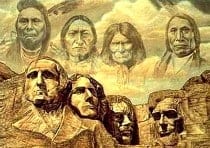 survived if not for the friendship developed with some tribes. How many enjoy corn on the cob at the Fourth of July celebration you attend? You can thank a Native American for that, although modern corn today resembles the original very little. Speaking of giving thanks, we do every year; Thanksgiving was a shared Holiday between the Pilgrims and their Native hosts based on Native tradition after their harvests. The Natives gave us the “3 Sisters” of agriculture, corn, beans and squash. Other than corn, I think the other two crops were grown by Europeans before coming to America (different varieties perhaps). The 3 Sisters approach will help maximize growing potential for small spaces. They would plant the all 3 crops in the same rows. The beans, a pole bean type, would use the corn stalks as their
survived if not for the friendship developed with some tribes. How many enjoy corn on the cob at the Fourth of July celebration you attend? You can thank a Native American for that, although modern corn today resembles the original very little. Speaking of giving thanks, we do every year; Thanksgiving was a shared Holiday between the Pilgrims and their Native hosts based on Native tradition after their harvests. The Natives gave us the “3 Sisters” of agriculture, corn, beans and squash. Other than corn, I think the other two crops were grown by Europeans before coming to America (different varieties perhaps). The 3 Sisters approach will help maximize growing potential for small spaces. They would plant the all 3 crops in the same rows. The beans, a pole bean type, would use the corn stalks as their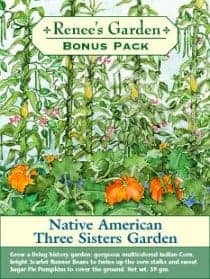 trellis and since they are a legume, they added nitrogen to the soil which corn needs in plentiful amounts. The squash would grow along the ground where the corn and bean plants helped shade them and they would help keep weeds from growing by “choking out” the soil and blocking the sunlight. Pole beans normally have a smaller yield overall than bush style beans, but they produce all season long, thus making food available for a longer period of time.
trellis and since they are a legume, they added nitrogen to the soil which corn needs in plentiful amounts. The squash would grow along the ground where the corn and bean plants helped shade them and they would help keep weeds from growing by “choking out” the soil and blocking the sunlight. Pole beans normally have a smaller yield overall than bush style beans, but they produce all season long, thus making food available for a longer period of time.
Also planting certain flowers has benefits. Flowers will draw bees which will help pollinate your plants and if a hive is nearby, they will supply you with a very powerful antibacterial and sweetener for tea, honey; plus beeswax for waterproofing, candles, etc. Some plants will not only provide food or alternative medicine, but also helps keep other pests and “garden raiders” away; marigolds will kill insects, garlic and mint(s) will help mask the smells of your garden plants from rabbits and other garden raiders. Some farmers in Indiana plant a few rows of mint around their fields to ward off deer. The deer do not like going into the fields because the mint smell is so strong they cannot smell a predator closing in. Crockett’s Victory Garden is a good reference for what times to plant, thin out and harvest crops. Look for books on container gardening, small scale gardening, and companion gardening to get ideas on what will work best for you and your location(s).
Also, do not forget to grow some herbs. These will add flavor to foods, some are medicinal, some will ward insects or rodents from the area and most are extremely easy to grow on a windowsill in the kitchen (or south facing window in the Northern Hemisphere). You can build small boxes that are attached to the outside of your window sill to grow them and add some decoration to the house.
Herbs have been used for centuries to combat disease, poison, parasites, viruses, etc. They are also used in “alternative medicine” to help the body mend by regulating hormones and other glandular secretions. Herbs such as alfalfa, bee pollen, bee propolis, black and blue cohosh, cayenne, garlic (to name a few) are used to regulate blood pressure; alfalfa, cayenne, garlic, dandelion, sage, red raspberry, kelp, reishi mushrooms, among others are used to combat diabetes; barley juice powder, royal jelly, fenu greek, dandelion, shitake and reishi mushrooms, plantain are but some used in the battle with cholesterol (The Little Herb Encyclopedia by Jack Ritchason). Some herbs can be used to expel or prevent worms in humans and animals and these will be the solutions to medicinal issues once the corner drugstore becomes a memory if an event happens. You should acquire, study, and plan for any situations that may arise to be prepared; whether foraging wild herbs or growing your own. I recommend books from several authors and then cross reference them for fact checking. Some books are available for free download (www.learningherbs.com as one source) and others are available through your local health food store or book store.
Look into some of the wild plants that can be forged for food, i.e., cattails, wild fruit and nuts, sassafras, False Solomon’s Seal (the native’s “sweet potato”), and dandelion, to name a few, to grow in your garden. The best results would be to establish a “biosphere” of sorts to mimic their natural growing areas.
Composting and other natural fertilizers will need to be thought of if a long term event happens (Miracle Grow probably won’t be available). Native Americans buried a small fish in the soil with their seeds for one idea. All organic material can be composted, but be careful of the Ph balance certain materials can create. Manure works well, but chicken and hog manure is very high in nitrogen and can kill plants if added in large amounts directly to the garden spot. If possible, you can even grind down animal bones into a fertilizer (bonemeal in stores) and some butcher shops do this already.
If able to start these projects now, you will benefit from reducing expenses (groceries), have satisfaction in knowing you truly put the food on the table, be able to spend quality time with the family (if done as a group project) and even the young children can be involved in prepping. Plus I think this is a healthier hobby than being a couch potato, but that is a personal opinion. I have been trying to grow more organic foods and reduce the chemicals introduced to my body. Store bought canned goods are usually high in sugars and salts, plus all the preservatives used to abide by the FDA regulations. I’ve eaten home canned vegetables from 20+ years ago at my Aunt and Uncle’s without any ill effects and I do not remember seeing an expiration date on them either. Home canning and freezing (if possible) will allow you to enjoy your harvest year round.
Mine is personal preference and following my medical provider’s advice to either counteract or hopefully fix my illness (for lack of a better term). I have 65% of my liver that functions and it no longer regenerates as a healthy liver does. I’ve been to several doctors and a really well-reputed “Clinic” and after running blood and other tests, I’m usually very politely asked to leave because “they do not want to get involved”. The oncologist that I was referred to gave me 5-10 years at first then changed to 5 years at best because of the acceleration of the issues and other organs effected. I have returned my herbalist, which I left during military service, and seem to be on the mend or at least at a stalemate in the battle for my health. I have learned some things because of my ordeal and hope to learn more. I do not speak of this for any reason other than sharing why I recommend non hybrid and more natural foods. It may also help those just beginning, by knowing that you should never give up; survival is 90%+ mental (IMHO). You can have all the skills and gear possible but if you resign yourself to failure; then you WILL fail.
There are several items and needs to consider when undertaking this decision. The SurvivalCache Forum has a category dedicated to this very topic and is a great resource for those looking for ideas or feedback from members who have experience in this skill set. We all have experiences and past events that have caused us to choose the path we walk today. I share mine to give a look into what has brought me to the prepping lifestyle and hopefully, maybe give an idea to someone which will help them in their quest. I can only hope that I may have actually “taught” someone something, but I know I have learned from reading the comments following the articles and on the forum.
The Native Americans are one of the best groups at survival known in the modern era. All cultures, whether they were Celts, Vikings, Goths, etc, had to survive during the “dark ages” but they adapted their lives to bring us what we know today. The Native Americans were one of the last populations who still lived a subsistence life. We owe our very nation to the Natives, who gave our ancestors the knowledge and skills to survive this “New World”. Most native “tribes” lived a nomadic lifestyle of sorts and “owned” land just by claiming it (and defending it) for their use. Some Natives, the Cherokee, Iroquois, and Huron/Wyandot to name a few, had great palisaded towns and populations in the thousands. These Native tribes can be (and should be) a great example of how we can set up a post event community and be able to live “comfortably” while we reestablish our modern way of life (if so desired).
The Longhunters and Mountain Men paved the way for “civilization” to follow but they only tamed the land and did NOT conquer it. 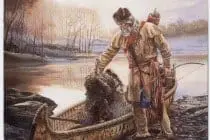 It was the pioneer and settler who conquered the land and gave us the great nation we have. The same will be true after an event, we will need to put down roots (pun intended) to rebuild our nation (whichever nation you call home). The nomadic lifestyle may be needed in the beginning to survive, but it will take the “new settlers” banding together with neighbors to ward off attacks by “war parties” (Golden Horde) and rebuild society into what we take for granted now. During a crisis, we must look back on our pioneering forefathers’ lifestyles, as we will need to revert to this for a time. If we plan forward, it will not take 200 years to reestablish our nation, as we have the luxury of learning from the past. Remember, hunting grounds will be fought for, homesteads will be raided and we will suffer whatever mother nature can throw at us; but our ancestors managed to build a nation from scratch while plagued by the same conditions. If possible, prepare now with your neighbors and community for disasters and from there, possibly for a major event.
It was the pioneer and settler who conquered the land and gave us the great nation we have. The same will be true after an event, we will need to put down roots (pun intended) to rebuild our nation (whichever nation you call home). The nomadic lifestyle may be needed in the beginning to survive, but it will take the “new settlers” banding together with neighbors to ward off attacks by “war parties” (Golden Horde) and rebuild society into what we take for granted now. During a crisis, we must look back on our pioneering forefathers’ lifestyles, as we will need to revert to this for a time. If we plan forward, it will not take 200 years to reestablish our nation, as we have the luxury of learning from the past. Remember, hunting grounds will be fought for, homesteads will be raided and we will suffer whatever mother nature can throw at us; but our ancestors managed to build a nation from scratch while plagued by the same conditions. If possible, prepare now with your neighbors and community for disasters and from there, possibly for a major event.
Farming/homesteading is another skill set that unless practiced, you really don’t have it regardless of how many books you’ve read or how many you talked to. If possible, this skill can save hundreds or thousands of dollars a year that can be used to purchase other essential gear to further enhance your family’s chances of surviving an event. I try to not only contemplate and plan for an actual event and what’s needed but then what I can do now that will further allow me to acquire the gear I feel is needed (saving money on groceries allows me to purchase more ammo or reloading components). Prepping must be considered in a “full circle, big picture” style, as each baby step leads to walking, which leads to sprinting which leads to the marathon of a lifetime if an event takes place.
Stay Alert, Stay Alive
by Regulator5





